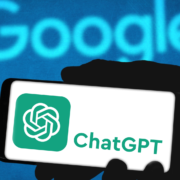Tag Archive for: #SEOROI
AI-powered ad testing—How Delta and other brands are determining the precise impact of their marketing – Ad Age
Brands explored everything from absurdist humor to AI storytelling, from Super Bowl spectacles to low-fi stunts, in the first seven months of the year.
Proving SEO Value in AI Era: Strategies for ROI and Growth – WebProNews
In the rapidly evolving world of digital marketing, where artificial intelligence is reshaping search behaviors, proving the tangible value of search engine optimization (SEO) has become a critical challenge for marketers and executives alike. As AI-driven tools like Google’s AI Overviews and ChatGPT dominate user queries, traditional metrics such as click-through rates are plummeting, forcing a reevaluation of how SEO contributes to business growth. According to a recent analysis in Search Engine Journal, the key to securing buy-in lies in demonstrating SEO’s worth through innovative tracking and forecasting methods that align with stakeholder priorities.
This shift is not just theoretical; it’s grounded in real-time data showing that AI is siphoning off organic traffic. For instance, impressions may rise as content appears in AI summaries, but actual site visits often drop, creating a disconnect between visibility and revenue. Marketers must now pivot to metrics that capture AI-era dynamics, such as share of voice in AI responses or the quality of referral traffic from diverse platforms.
Tracking AI Visibility as a Core Metric
One effective strategy highlighted by industry experts involves monitoring AI visibility to quantify SEO’s impact beyond traditional search results. By using tools that track how often a brand’s content is cited in AI-generated answers, companies can demonstrate sustained relevance. A post on X from SEO veteran Matt Diggity emphasizes that entity optimization—focusing on building a brand’s knowledge graph presence—is crucial for dominating AI platforms like Gemini and ChatGPT, turning potential traffic losses into opportunities.
Complementing this, competitive benchmarking provides a clearer picture of SEO’s ROI. Instead of isolated performance data, comparing a site’s AI visibility against rivals reveals market share gains. For example, if a competitor’s content appears in 40% of AI overviews for key queries while yours lags at 15%, this gap becomes a compelling argument for increased SEO investment, as noted in recent insights from Backlinko.
Forecast Modeling for Predictive ROI
Forecasting models are another powerful tool, allowing teams to project future traffic and revenue based on current SEO efforts. By integrating historical data with AI trends, these models can predict outcomes like a 20% uplift in qualified leads if E-E-A-T (Experience, Expertise, Authoritativeness, Trustworthiness) guidelines are fully implemented. A detailed guide in Fast Frigate stresses that incorporating real-world proof, such as case studies, bolsters these forecasts, making them more persuasive to C-suite executives skeptical of intangible digital strategies.
Real-world applications underscore this approach’s effectiveness. Take Zapier’s rise, documented in Glorywebs, where targeted content optimization led to a 300% traffic increase by aligning with user intent across AI-influenced searches. Such examples illustrate how forecasting isn’t guesswork but a data-driven narrative that ties SEO to bottom-line results.
Leveraging Case Studies for Credible Proof
To further solidify SEO’s value, integrating case studies from successful campaigns provides empirical evidence. A compilation of 19 SEO success stories in AIOSEO reveals patterns like Airbnb’s use of localized content to capture high-intent searches, resulting in millions in additional bookings. These narratives counter doubts by showing compounded ROI over time, especially in an AI context where trust signals like backlinks and author expertise amplify visibility.
Industry insiders on X, including Neil Patel, point to a broader trend: optimizing for all platforms, not just Google, with daily searches totaling 45.1 billion across ecosystems. This multi-platform strategy ensures diversified traffic, reducing reliance on any single source and proving SEO’s resilience.
Addressing Stakeholder Concerns with Diversified Metrics
Stakeholders often question SEO’s cost-effectiveness amid AI disruptions, but diversified metrics offer a robust defense. By measuring not only traffic but also user engagement and conversion paths influenced by AI referrals, marketers can highlight holistic value. A recent X thread from SA News Channel on SEO copywriting pillars reinforces that people-first content, blended with SERP strategy, yields measurable trust and authority gains.
Moreover, as Bruce Clay Inc. detailed in a Semrush collaboration, emerging trends like voice search and personalized AI experiences demand adaptive strategies. Proving value here involves showing how SEO fosters long-term brand authority, turning one-time visitors into loyal customers through consistent, high-quality interactions.
Building a Compelling Narrative for Investment
Ultimately, the narrative around SEO must evolve to emphasize its role as a foundational growth driver in the AI age. By combining AI visibility tracking, predictive modeling, and competitive insights with real case studies, professionals can craft arguments that resonate with decision-makers. Insights from Jolt Collective affirm that SEO remains essential for relevance and competitiveness, transforming skepticism into strategic commitment.
As 2025 unfolds, those who master these proof strategies will not only secure budgets but also position their brands to thrive amid ongoing innovations. The evidence is clear: SEO’s real value lies in its adaptability, delivering sustained visibility and revenue in an increasingly AI-dominated digital ecosystem.
Subscribe for Updates
Search engine optimization tips, tools and updates for SEO pros.
Help us improve our content by reporting any issues you find.
Get the free daily newsletter read by decision makers
Get our media kit
Deliver your marketing message directly to decision makers.
Grok Imagine, xAI’s new AI image and video generator, lets you make NSFW content – TechCrunch
Latest
AI
Amazon
Apps
Biotech & Health
Climate
Cloud Computing
Commerce
Crypto
Enterprise
EVs
Fintech
Fundraising
Gadgets
Gaming
Google
Government & Policy
Hardware
Instagram
Layoffs
Media & Entertainment
Meta
Microsoft
Privacy
Robotics
Security
Social
Space
Startups
TikTok
Transportation
Venture
Staff
Events
Startup Battlefield
StrictlyVC
Newsletters
Podcasts
Videos
Partner Content
TechCrunch Brand Studio
Crunchboard
Contact Us
Elon Musk’s AI company has officially rolled out Grok Imagine, xAI’s image and video generator, to all SuperGrok and Premium+ X subscribers on its iOS app. And true to form for Musk, who positions Grok as an unfiltered, boundary-pushing AI, the generator allows users to make NSFW content.
Grok Imagine, which promises to turn text or image prompts into a 15-second video featuring native audio, has a “spicy mode” that allows users to generate sexually explicit content, including partial female nudity . There are limits to how explicit one can get. Many of our spicier prompts — made in the name of Journalism! — generate blurred-out images that are “moderated” and therefore inaccessible. We were, however, able to generate semi-nude imagery.
Imagine with @Grok pic.twitter.com/UIay5yNp97
The NSFW content is unsurprising for xAI, given the release last month of a raunchy, hyper-sexualized anime AI companion. But just as Grok’s unrestrained nature was entertaining until it started spewing hateful, antisemitic, misogynistic content, Grok Imagine could be poised to bring its own set of unintended consequences.
CNBC first reported the existence of a “spicy mode” last week after xAI employee Mati Roy said in a now-deleted post on X: “Grok Imagine videos have a spicy mode that can do nudity.”
TechCrunch has reached out to xAI for more information.
The existing limitations with Grok Imagine are somewhat heartening given the model also lets you create content of celebrities — anyone from Donald Trump to Taylor Swift — and there appear to be additional restrictions on those. For example, TechCrunch tried, and failed, to generate an image of Trump pregnant. Grok Imagine only generated images of Trump holding a baby or next to a pregnant woman.
While it’s still early days for Grok Imagine, which aims to compete with incumbents like Google DeepMind, OpenAI, Runway, and Chinese rivals, the images and videos generated of humans are still a bit lost in the uncanny valley, with waxy-looking skin that verges on cartoonish at times.
Still, the generator is impressive. It produces images in seconds from a text prompt, and continues to auto-generate new images as you scroll. Those images can then be animated into stylized videos. The user interface is also seamless and intuitive.
Musk said on X that the model would “get better every day.”
Testing out Grok Imagine 👀 pic.twitter.com/G943K0soNJ
Topics
Rebecca Bellan is a senior reporter at TechCrunch, where she covers Tesla and Elon Musk’s broader empire, autonomy, AI, electrification, gig work platforms, Big Tech regulatory scrutiny, and more. She’s one of the co-hosts of the Equity podcast and writes the TechCrunch Daily morning newsletter. Previously, she covered social media for Forbes.com, and her work has appeared in Bloomberg CityLab, The Atlantic, The Daily Beast, Mother Jones, i-D (Vice) and more. Rebecca has invested in Ethereum.
Put your brand in front of 10,000+ tech and VC leaders across all three days of Disrupt 2025. Amplify your reach, spark real connections, and lead the innovation charge. Secure your exhibit space before your competitor does.
Rivian sues to sell its EVs directly in Ohio
TechCrunch Mobility: Tesla’s ride-hailing gambit
Perplexity accused of scraping websites that explicitly blocked AI scraping
OpenAI says ChatGPT is on track to reach 700M weekly users
Elon Musk says he’s bringing back Vine’s archive
Grok Imagine, xAI’s new AI image and video generator, lets you make NSFW content
Lyft and China’s Baidu look to bring robotaxis to Europe next year
© 2025 TechCrunch Media LLC.
Google Merchant Knowledge Panel Deals Section Update – Search Engine Roundtable

Google has replaced the promotions section in the merchant local knowledge panel with a deals section. There are still clipable coupons but it is renamed “Deals” instead of it saying “Promotions.” There is also a new green percentage icon next to each deal.
This was spotted by both Sachin Patel on X and later by Brodie Clark on X/SERP Alerts. Here is the new version:
Here is the old version:
Here is another version:
Brodie wrote:
Google is now showing a new treatment for promotions within merchant knowledge panels.
The section is now showing underneath a ‘deals’ heading that displays a green % badge alongside each individual promotion.
After clicking the ‘view all deals’ tab, all deals are then featured at top of the page within the same knowledge panel experience.
This makes promotions that are loaded into GMC Next more prominent for branded queries with a more engaging treatment compared to previously.
Then there is also this:
Noticed a similar 'deals' section showing for a client of mine today. The treatment is similar to what was originally described within a brand profile that's managed in GMC: https://t.co/pIps85tcFL. Is this another sign of a broader rollout of this feature? https://t.co/e2YeDQkN4f pic.twitter.com/Odnk6a4PpT
— SERP Alert ⚡️ (@SERPalerts) August 1, 2025
Noticed a similar 'deals' section showing for a client of mine today. The treatment is similar to what was originally described within a brand profile that's managed in GMC: https://t.co/pIps85tcFL. Is this another sign of a broader rollout of this feature? https://t.co/e2YeDQkN4f pic.twitter.com/Odnk6a4PpT
These deals do stand out more with these green icons and the word “Deals” doesn’t hurt.
Forum discussion at X.
The content at the Search Engine Roundtable are the sole opinion of the authors and in no way reflect views of RustyBrick ®, Inc
Copyright © 1994-2025 RustyBrick ®, Inc. Web Development All Rights Reserved.
This work by Search Engine Roundtable is licensed under a Creative Commons Attribution 3.0 United States License. Creative Commons License and YouTube videos under YouTube’s ToS.
Building an AI-driven course content generation system using Amazon Bedrock – Amazon Web Services
AWS Blogs
The education sector needs efficient, high-quality course material development that can keep pace with rapidly evolving knowledge domains. Faculty invest days to create content and quizzes for topics to be taught in weeks. Increased faculty engagement in manual content creation creates a time deficit for innovation in teaching, inconsistent course material, and a poor experience for both faculty and students.
Generative AI–powered systems can significantly reduce the time and effort faculty spend on course material development while improving educational quality. Automating content creation tasks gives educators more time for interactive teaching and creative classroom strategies.
The solution in this post addresses this challenge by using large language models (LLMs), specifically Anthropic’s Claude 3.5 through Amazon Bedrock, for educational content creation. This AI-powered approach supports the automated generation of structured course outlines and detailed content, reducing development cycles from days to hours while ensuring materials remain current and comprehensive. This technical exploration demonstrates how institutions can use advanced AI capabilities to transform their educational content development process, making it more efficient, scalable, and responsive to modern learning needs.
The solution uses Amazon Simple Queue Service (Amazon SQS), AWS Lambda, Amazon Bedrock, Amazon API Gateway WebSocket APIs, Amazon Simple Storage Service (Amazon S3), Amazon CloudFront, Amazon DynamoDB, Amazon Cognito and AWS WAF. The architecture is designed following the AWS Well-Architected Framework, facilitating robustness, scalability, cost-optimization, high performance, and enhanced security.
In this post, we explore each component in detail, along with the technical implementation of the two core modules: course outline generation and course content generation. Course outline generates course structure for a subject with module and submodules by week. Primary and secondary outcomes are generated in a hierarchical structure by week and by semester. Content generation is content generated for the module and submodule generated in content outline. Content generated includes text and video scripts with corresponding multiple-choice questions.
The solution architecture integrates the two core modules through WebSocket APIs. This design is underpinned by using AWS Lambda function for serverless compute, Amazon Bedrock for AI model integration, and Amazon SQS for reliable message queuing.
The system’s security uses multilayered approach, combining Amazon Cognito for user authentication, AWS WAF for threat mitigation, and a Lambda authorizers function for fine-grained access control. To optimize performance and enhance user experience, AWS WAF is deployed to filter out malicious traffic and help protect against common web vulnerabilities. Furthermore, Amazon CloudFront is implemented as a WebSocket distribution layer, to significantly improve content delivery speeds and reduce latency for end users. This comprehensive architecture creates a secure, scalable, and high-performance system for generating and delivering educational content.
Course WebSocket API manages real-time interactions for course outline and content generation. WebSockets enable streaming AI responses and real-time interactions, reducing latency and improving user responsiveness compared to traditional REST APIs. They also support scalable concurrency, allowing parallel processing of multiple requests without overwhelming system resources. AWS WAF provides rule-based filtering to help protect against web-based threats before traffic reaches API Gateway. Amazon CloudFront enhances performance and security by distributing WebSocket traffic globally. Amazon Cognito and JWT Lambda authorizer function handles authentication, validation of user identity before allowing access.
Each WebSocket implements three primary routes:
The WebSocket API integrates Amazon Cognito for authentication and uses a JWT-based Lambda authorizer function for token validation. The authentication flow follows these steps:
The following is a sample AWS CDK code to set up the WebSocket API with Amazon Cognito. AWS CDK is an open source software development framework to define cloud infrastructure in code and provision it through AWS CloudFormation. The following code is written in Python. For more information, refer to Working with the AWS CDK in Python:
The course outline generation module helps course designers create a structured course outline. For this proof of concept, the default structure spans 4 weeks, with each week containing three main learning outcomes and supporting secondary outcomes, but it can be changed according to each course or institution’s reality. The module follows this workflow:
The following code sample is a sample payload for the courseOutline route, which can be customized to meet institutional requirements. The fields are defined as follows:
When interacting with the courseOutline route of the WebSocket API, the response follows a structured format that details the course outline and structure. The following is an example of a WebSocket response for a course. This format is designed for straightforward parsing and seamless integration into your applications:
Here’s a snippet of the Lambda function for processing the outline request:
The course content generation module creates detailed week-by-week content based on the course outline. Although the default configuration generates the following for each main learning outcome, these outputs are fully customizable to meet specific course needs and institutional preferences:
The module follows this workflow:
The following is a sample payload for the courseContent route, which can be customized to align with institutional requirements. The fields are defined as follows:
When interacting with the courseContent route of the WebSocket API, the response follows a structured format that details the course content. The following is an example of a WebSocket response for a course content. This format is designed for easy parsing and seamless integration into your applications:
Here’s a Lambda function code snippet for content generation:
To implement the solution provided in this post, you should have the following:
When the prerequisite steps are complete, you’re ready to set up the solution:
The activation of the virtual environment differs based on the operating system; refer to the AWS CDK workshop for activating in other environments.
export AWS_REGION=”<region>” # Same region as ACCOUNT_REGION above
export AWS_ACCESS_KEY_ID=”<access-key>” # Set to the access key of your role/user
export AWS_SECRET_ACCESS_KEY=”<secret-key>” # Set to the secret key of your role/user
Note the CloudFront endpoints, WebSocket API endpoints, and Amazon Cognito user pool details from deployment outputs.
The solution is designed with scalability and security as core principles. Because Amazon API Gateway for WebSockets doesn’t inherently support AWS WAF, we’ve integrated Amazon CloudFront as a distribution layer and applied AWS WAF to enhance security.
By using Amazon SQS and AWS Lambda, the system enables asynchronous processing, supports high concurrency, and dynamically scales to handle varying workloads. AWS WAF helps to protects against malicious traffic and common web-based threats. Amazon CloudFront can improve global performance, reduce latency, and provide built-in DDoS protection. Amazon Cognito handles authentication so that only authorized users can access the WebSocket API. AWS IAM policies enforce strict access control to secure resources such as Amazon Bedrock, Amazon S3, AWS Lambda, and Amazon DynamoDB.
To avoid incurring future charges on the AWS account, invoke the following command in the terminal to delete the CloudFormation stack provisioned using the AWS CDK:
This innovative solution represents a significant leap forward in educational technology, demonstrating how AWS services can be used in course development. By integrating Amazon Bedrock, AWS Lambda, WebSockets, and a robust suite of AWS services, we’ve built a system that streamlines content creation, enhances real-time interactivity, and facilitates secure, scalable, and high-quality learning experiences.
By developing comprehensive course materials rapidly, course designers can focus more on personalized instruction and student mentoring. AI-assisted generation facilitates high-quality, standardized content across courses. The event-driven architecture scales effortlessly to meet institutional demands, and CloudFront, AWS WAF, and Amazon Cognito support secure and optimized content delivery. Institutions adopting this technology position themselves at the forefront of educational innovation, redefining modern learning environments.
This solution goes beyond simple automation—it means teachers and professors can shift their focus from manual content creation to high-impact teaching and mentoring. By using AWS AI and cloud technologies, institutions can enhance student engagement, optimize content quality, and scale seamlessly.
We invite you to explore how this solution can transform your institution’s approach to course creation and student engagement. To learn more about implementing this system or to discuss custom solutions for your specific needs, contact your AWS account team or an AWS education specialist.
Together, let’s build the future of education on the cloud. Dinesh Mane is a Senior ML Prototype Architect at AWS, specializing in machine learning, generative AI, and MLOps. In his current role, he helps customers address real-world, complex business problems by developing machine learning and generative AI solutions through rapid prototyping.
Dinesh Mane is a Senior ML Prototype Architect at AWS, specializing in machine learning, generative AI, and MLOps. In his current role, he helps customers address real-world, complex business problems by developing machine learning and generative AI solutions through rapid prototyping. Tasneem Fathima is Senior Solutions Architect at AWS. She supports Higher Education and Research customers in the United Arab Emirates to adopt cloud technologies, improve their time to science, and innovate on AWS.
Tasneem Fathima is Senior Solutions Architect at AWS. She supports Higher Education and Research customers in the United Arab Emirates to adopt cloud technologies, improve their time to science, and innovate on AWS. Amir Majlesi leads the EMEA prototyping team within AWS Worldwide Specialist Organization. Amir has extensive experiences in helping customers accelerate adoption of cloud technologies, expedite path to production and catalyze a culture of innovation. He enables customer teams to build cloud native applications using agile methodologies, with a focus on emerging technologies such as Generative AI, Machine Learning, Analytics, Serverless and IoT.
Amir Majlesi leads the EMEA prototyping team within AWS Worldwide Specialist Organization. Amir has extensive experiences in helping customers accelerate adoption of cloud technologies, expedite path to production and catalyze a culture of innovation. He enables customer teams to build cloud native applications using agile methodologies, with a focus on emerging technologies such as Generative AI, Machine Learning, Analytics, Serverless and IoT.
Loading comments…
Google Patches Vulnerability Enabling Article De-Indexing and Censorship – WebProNews
In the intricate world of digital information management, a recent vulnerability in Google’s ecosystem has raised alarms among tech professionals and content creators alike. The issue centers on Google’s Refresh Outdated Content tool, originally designed to help website owners request the removal or updating of stale search results. However, as revealed in a detailed report, this feature was manipulated to effectively erase legitimate articles from search visibility, sparking concerns over potential censorship and the integrity of online information.
The exploit came to light when a journalist noticed that critical articles about a San Francisco tech executive had vanished from Google Search results. Attackers abused the tool by submitting fraudulent requests, claiming the content was outdated or irrelevant, which led Google to de-index the pages without proper verification. This not only suppressed valid journalism but also highlighted a flaw in Google’s automated systems that could be weaponized by anyone with basic knowledge of the tool’s interface.
The Mechanics of Manipulation
Delving deeper, the vulnerability allowed unauthorized users to target specific URLs and request their removal under the guise of refreshing content. According to TechRepublic, the tool, intended for site owners to manage their own content, lacked robust authentication, enabling bad actors to impersonate legitimate requesters. In one documented case, negative press about a CEO was hidden, demonstrating how easily the system could be gamed for personal or corporate gain.
Experts point out that this isn’t an isolated incident but part of a pattern in Google’s ongoing battle with search manipulation. The tool’s design, which relies on algorithmic judgments rather than human oversight for initial requests, created a loophole ripe for exploitation. As 404 Media reported, the journalist who uncovered this traced the de-indexing to suspicious activity, underscoring the need for stronger safeguards in search engine operations.
Google’s Swift Response and Patches
In response, Google acted quickly to patch the vulnerability, implementing enhanced verification processes to prevent unauthorized use of the Refresh Outdated Content tool. A spokesperson from the company confirmed the fix, emphasizing that while the exploit affected a limited number of cases, it prompted a broader review of content management features. This move aligns with Google’s history of addressing zero-day threats, as seen in recent Chrome browser updates that tackled actively exploited flaws, per reports from BleepingComputer.
Yet, the incident exposes deeper vulnerabilities in how search giants handle information flow. Insiders note that without stringent checks, such tools could be co-opted for disinformation campaigns or competitive sabotage, eroding trust in search results. The patch, while effective, doesn’t retroactively restore all affected content, leaving some publishers to manually request re-indexing.
Implications for Digital Ethics and Regulation
For industry professionals, this exploit serves as a cautionary tale about the double-edged sword of automated content tools. It raises ethical questions about who controls visibility in the digital realm and the potential for abuse in an era of increasing online scrutiny. As TechSpot analyzed, the “clever censorship tactics” employed here could inspire copycat attempts, prompting calls for regulatory oversight on search engine practices.
Moreover, this event ties into broader security trends, where AI-driven tools like those from Prophet Security—recently funded to the tune of $30 million—are being deployed to counter autonomous threats. However, experts warn that reliance on such systems without human intervention amplifies risks, as evidenced by similar exploits in Google’s Docs comment features back in 2022, detailed in another TechRepublic piece.
Looking Ahead: Strengthening Search Integrity
As the tech sector digests this breach, there’s a growing consensus that Google and its peers must invest in hybrid models combining AI with manual reviews for high-stakes tools. The vulnerability’s discovery by vigilant journalists, as chronicled in Freedom of the Press Foundation, highlights the role of independent watchdogs in maintaining digital accountability. Ultimately, this incident underscores the fragile balance between innovation and security in managing the vast ocean of online content, urging insiders to advocate for more resilient frameworks to protect information’s free flow.
Subscribe for Updates
Search engine news, tips, and updates for the search professional.
Help us improve our content by reporting any issues you find.
Get the free daily newsletter read by decision makers
Get our media kit
Deliver your marketing message directly to decision makers.
Zero-click search is changing how small brands show up online — and spend – Digiday
Hear from execs at The New York Times, Thomson Reuters, Trusted Media Brands and many others
As a Digiday+ member, you were able to access this article early through the Digiday+ Story Preview email. See other exclusives or manage your account.This article was provided as an exclusive preview for Digiday+ members, who were able to access it early. Check out the other features included with Digiday+ to help you stay ahead
AI is on the cusp of upending the way people search and discover information online. For small to mid-sized brands, that means rethinking not just how they show up, but what teams (and what budgets) are responsible for the work.
Historically, paid search was a performance game, focused on keywords, page optimization and rankings. AI-powered search tools like ChatGPT and Google AI Overviews, however, have flipped the script. As people ask search engines conversational questions instead of keywords, the lines are blurring between search as a performance function and as an awareness channel, according to two marketing execs Digiday spoke with for this piece.
“In my mind, the performance and brand world is really starting to intersect together and we have to start being more data-driven around: how is this meeting the overall goals of the business?” said Katya Constantine, CEO of performance marketing agency DigiShop Media.
In other words, to appease the AI powers that be (a la the page crawlers that populate these AI engines), brands are prioritizing things like blogs, brand content and landing pages in addition to external brand narrative. For example, what gets picked up in a chatbot result could stem from a press mention or affiliate article.
Case in point: Tamara Rosenthal, vp of marketing at Taskrabbit, said press releases and content quoting execs have played a bigger role in having consumers discover the brand. Now, the online marketplace brand is optimizing announcements by ensuring content directly answers questions people may be asking AI chat bots and adding more detailed information to its existing content so it’s better understood by search tools. And that’s not just for traditional media pick-up, but also for how the brand may appear in AI summaries, AI chatbot tools to ensure “brand-aligned narratives surface,” Rosenthal said in an email to Digiday.
That takes the organic SEO strategy from a strictly performance-driven channel to a blend of performance and brand marketing as brands work to create a consistent narrative across search channels.
As the strategy shifts, expect dollars to follow soon. It’s too early for most brands to start allocating big chunks of their spend to SEO strategy, per the execs, especially as economic headwinds make marketing budgets more precious than ever. However, Tom Telford, chief digital officer at Clarity Global, a digital marketing and communications agency, said the agency has been nudging clients to connect the dots across performance and brand teams.
“It comes back to a joint objective between PR and marketing and then advertising, [because] everyone has to be trying to do the same thing,” he said.
Even if brand teams align their efforts, nailing down what’s actually working in AI-driven environments remains a challenge. For one, there’s the question of measurement and attribution.
Attribution has already been a point of contention for marketers operating in an increasingly fragmented marketplace. AI has only made for another stumbling block, said brand marketers like Bryan Demaranville, CEO of Melinda Maria, an L.A.-based jewelry brand.
“We’ve seen products rise and whether we attribute it to traditional SEO or whether we attribute it to the AI we don’t really know where it comes from,” he said.
Welcome to the era of zero-click, in which users stop their search journey in Google AI Overviews or within AI-powered chatbots without clicking an external link to a product page or brand website. For brands, there’s been a trickle of traffic from ChatGPT, but the changes in how people search for information has made attribution that much harder. According to Jeffrey Lee, CEO and co-founder of DIBS beauty brand, an estimated .02% of the brand’s traffic is coming directly from ChatGPT.
That said, small to medium-sized businesses like Melinda Maria and DIBS beauty brand are continuing to invest in traditional SEO while treating AI as a test-and-learn sandbox.
“First of all, there’s still room for SEO. It’s not mutually exclusive, how you approach ranking in a GEO [generative engine optimization] or an AEO [answer engine optimization],” said Lee, adding “We can only play the game that we know while constantly testing.”
It’s not that brands are sitting on their hands, but AI-powered search isn’t dealing a direct blow to advertisers in the same way that it is to publishers, who rely on web traffic for ad revenue. These businesses may lose some organic traffic, but the focus is shifting toward building an authoritative brand narrative in zero-click environments. In a world where it’s getting harder to drive clicks, digital teams are tasked with optimizing content across a variety of content types in hopes to show up in the AI answer box.
“We’re figuring this out as we go and none of the platforms are making it easy,” DigiShop Media’s Constantine said. “It’s all about consistency now.”
Brands have previously tipped their toes into editorial by launching whole media publications — think MEL Magazine from Dollar Shave Club or Here Magazine from Away.
The creator economy is entering a new era of legitimacy and scale — signaling that investors see creators as full-fledged media worth betting on.
Consumers are more concerned about finding the best deal than they were a year ago, according to recent consumer surveys.
Get access to tools and analysis to stay ahead of the trends transforming media and marketing
Visit your account page to make changes and renew.
Get Digiday's top stories every morning in your email inbox.
Follow @Digiday for the latest news, insider access to events and more.
Google AI for Learning, Shift to AI PCs, & Windows 11 Update: THE Journal News of the Week (8/1/25) – THE Journal: Technological Horizons in Education
In this episode of THE Journal Insider Podcast Shorts, Rhea Kelly highlights recent advancements in education technology. Key stories include Google’s new AI Mode features in Search designed for enhanced learning, Intel’s report on AI adoption shifting towards specialized AI PCs for better IT efficiency and security, and Microsoft’s updates for Windows 11 that reduce downtime and improve system recovery. Stay tuned for more insightful news in the world of education technology.
00:00 Introduction to THE Journal Insider Podcast Shorts
00:15 Google’s New AI Mode Features for Enhanced Learning
01:01 Intel Report: Shift Towards Specialized AI PCs
01:40 Microsoft’s Windows 11 Updates for Improved System Recovery
02:22 Conclusion and Further Resources
Source links:
THE Journal Insider Podcast Shorts are curated by humans and narrated by AI.










